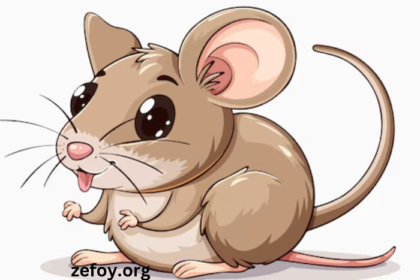In an era where visual communication is paramount, the significance of clipart in research cannot be overstated. Whether in academic papers, presentations, or digital content, the integration of visual elements like clipart enhances the conveyance of information and engages the audience effectively. Clipart:6yskjiozmps= Research specifically delves into the practical applications, benefits, and best practices surrounding the use of clipart in various research contexts. This article will explore its historical background, various uses, and implications for researchers, educators, and professionals.
What is Clipart and Why is it Important for Research?
Clipart consists of pre-made images or illustrations that can be utilized in a variety of contexts to enhance visual storytelling. In research, the use of clipart serves multiple purposes. It can simplify complex information, illustrate concepts, and capture the audience’s attention.
The importance of clipart in research lies in its ability to make information more accessible. For instance, a researcher presenting findings on climate change may use clipart of melting icebergs or rising sea levels to visually communicate the urgency of the issue. This visual representation not only enhances understanding but also evokes an emotional response, thereby making the research more impactful.
Clipart:6yskjiozmps= Research plays a pivotal role in ensuring that the visual aspects of research are not merely decorative but serve to complement and clarify the content being presented. By integrating relevant imagery, researchers can bridge the gap between complex data and audience comprehension.
How Has Clipart Evolved in the Digital Age?
The evolution of clipart is closely linked to advancements in technology. In the past, clipart was often limited to black-and-white images printed in books or distributed on floppy disks. However, the rise of the internet and digital design software has transformed the clipart landscape.
Today, clipart is more diverse than ever, featuring high-resolution images, animations, and vector graphics that can be easily customized. Platforms such as Adobe Stock, Shutterstock, and clipart:6yskjiozmps= Research provide extensive libraries of images that researchers can choose from, catering to various themes and topics.
This evolution also reflects changing societal attitudes toward visual communication. As the audience’s preferences shift toward more dynamic and engaging content, the demand for high-quality clipart has increased. Researchers now have access to tools that enable them to create visually appealing presentations that enhance the overall impact of their work.
What Are the Best Practices for Using Clipart in Research?
Using clipart effectively in research requires thoughtful consideration of several factors. First, the relevance of the clipart to the subject matter is paramount. Researchers should select images that directly relate to the content they are discussing, ensuring that the visuals enhance understanding rather than distract from it.
Additionally, researchers must pay attention to the quality of the clipart. High-resolution images contribute to a professional appearance and ensure that the visuals remain clear when projected or printed. Utilizing tools like clipart:6yskjiozmps= Research can help researchers find quality images that meet their needs.
Another critical aspect is the proper attribution of clipart used in research. Many images come with specific licensing agreements that dictate how they can be used. Researchers should familiarize themselves with these terms to ensure compliance and avoid potential copyright issues. By adhering to best practices, researchers can enhance their work without compromising on integrity.
How Can Clipart Improve Audience Engagement in Presentations?
Engaging an audience during a presentation is crucial for conveying research effectively. Clipart can significantly enhance audience engagement by providing visual breaks in the flow of information. When used appropriately, images can illustrate key points, highlight findings, and maintain interest throughout the presentation.
For example, a researcher discussing statistical data may incorporate clipart to represent various trends visually. Instead of presenting a series of numbers, the researcher can use images to depict the information more engagingly, allowing the audience to grasp the data more intuitively.
Furthermore, the emotional impact of visual storytelling cannot be underestimated. By using clipart that resonates with the audience, researchers can create a connection that enhances retention and understanding. This is particularly important in fields like public health, where visual representations of data can spur action and influence behavior.
The integration of clipart:6yskjiozmps= Research into presentations can help researchers craft a narrative that is not only informative but also compelling, making the overall experience more memorable for the audience.
What Role Does Clipart Play in Educational Research?
In educational research, the use of clipart serves as a powerful tool for enhancing learning materials. Teachers and educators can leverage clipart to create visually appealing lesson plans, worksheets, and presentations that cater to diverse learning styles.
Visual aids are particularly beneficial in classrooms where students may struggle with traditional teaching methods. By incorporating clipart that illustrates concepts or provides context, educators can facilitate better comprehension and engagement among students.
For instance, a lesson on ecosystems can be enriched with clipart of various animals and plants, allowing students to visualize the relationships within the ecosystem. This approach not only fosters a deeper understanding of the material but also encourages creativity and critical thinking.
Clipart:6yskjiozmps= Research demonstrates the potential for visual resources to transform educational practices, enabling educators to present information in a more dynamic and engaging manner. By embracing the power of visuals, educators can create a more inclusive and effective learning environment.
How Can Researchers Utilize Clipart for Infographics?
Infographics are a popular means of presenting complex information in a visually appealing way. Clipart can play a vital role in creating effective infographics by providing the necessary visual elements that break down information into digestible pieces.
When designing infographics, researchers should consider the flow of information and how clipart can enhance each section. For example, if a researcher is presenting data on renewable energy sources, they can incorporate clipart depicting solar panels, wind turbines, and hydroelectric dams. These visuals help to contextualize the data and make it more relatable.
Using clipart:6yskjiozmps= Research, researchers can access a variety of illustrations that can be combined with charts and graphs to create cohesive and informative infographics. The strategic use of clipart can significantly improve the clarity and effectiveness of the message being conveyed.
Moreover, infographics created with engaging clipart can be easily shared across social media and other platforms, increasing the reach of the research. By presenting information visually, researchers can attract a wider audience and encourage greater dissemination of their findings.
What Are the Benefits of Custom Clipart for Researchers?
While pre-made clipart is widely available, creating custom clipart can provide distinct advantages for researchers. Custom images allow researchers to tailor visuals specifically to their study or project, ensuring that the imagery aligns perfectly with their narrative.
Custom clipart can enhance brand identity, particularly for researchers who frequently present their work at conferences or publish in journals. Having a unique visual style can help researchers stand out and foster recognition within their field.
Additionally, creating custom clipart allows for greater flexibility in design. Researchers can incorporate specific elements or themes that resonate with their audience, enhancing the overall impact of their presentation or publication. For example, a researcher focused on mental health may create clipart that reflects themes of well-being, resilience, and community support.
Clipart:6yskjiozmps= Research emphasizes the importance of creating unique visuals that contribute to the overarching narrative of the research. By investing in custom clipart, researchers can elevate their work and create a lasting impression on their audience.
How Can Clipart Aid in Data Visualization?
Data visualization is essential in research as it allows complex data sets to be presented in a more understandable format. Clipart can enhance data visualization by providing visual cues that help to contextualize the information being presented.
For example, a researcher showcasing survey results may use clipart to symbolize different demographics, thereby adding a layer of understanding to the data. Instead of relying solely on numbers, the inclusion of relevant images can evoke a deeper connection to the statistics presented.
Additionally, clipart can be used in conjunction with charts and graphs to create a more engaging visual narrative. By combining clipart with data visualizations, researchers can create a comprehensive representation of their findings, making it easier for audiences to grasp the implications of the data.
Utilizing resources like clipart:6yskjiozmps= Research can help researchers find the right visuals to complement their data, ensuring that the presentation is both informative and visually appealing. This strategic approach to data visualization can significantly enhance audience understanding and retention of the research findings.
Conclusion
In conclusion, the role of clipart in research is multifaceted and impactful. From enhancing presentations to creating engaging educational materials, the effective use of clipart can significantly elevate the quality of research communication. By leveraging resources like clipart:6yskjiozmps= Research, researchers can access a wide array of visuals that complement their work, making complex information more accessible and engaging.
The evolution of clipart in the digital age has provided researchers with unprecedented opportunities to enhance their narratives through visuals. By adopting best practices for selecting, using, and creating clipart, researchers can ensure that their work stands out in an increasingly visual world.
As visual communication continues to dominate, the integration of clipart will remain an essential element in the research landscape. By recognizing the power of visuals, researchers can effectively convey their findings and engage their audiences, making a lasting impact in their respective fields.




